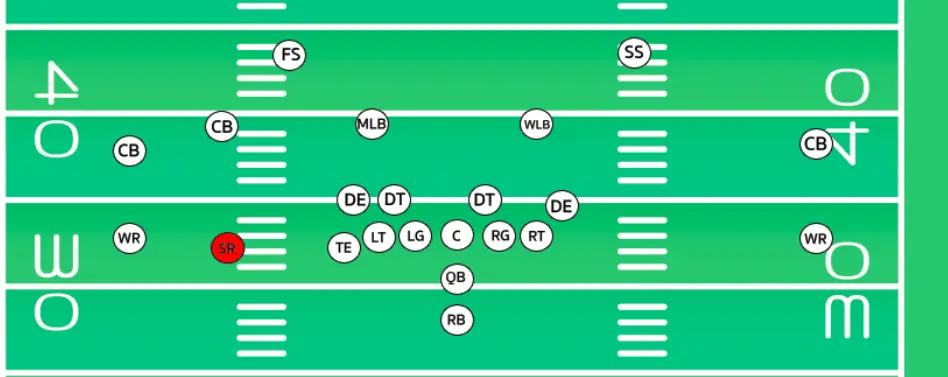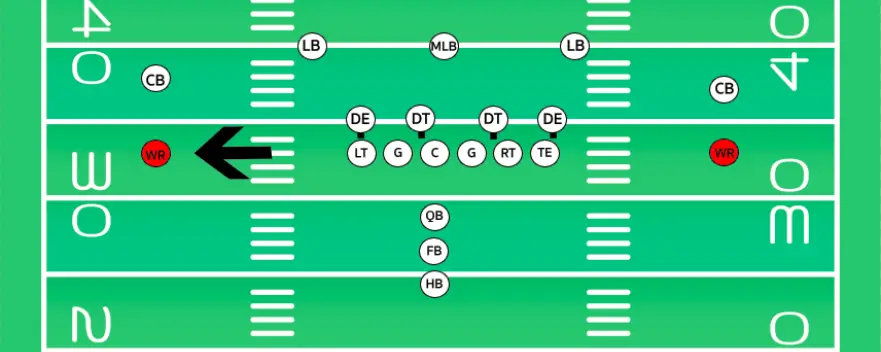If you watch football on Sundays you have likely heard the announcers refer to wide receivers and slot receivers. Both of these positions fit under the receiver position and are responsible for catching passes from the quarterback.
Generally speaking, slot receivers are going to be much smaller in stature compared to wide receivers. Slot receivers thrive on short routes requiring agility while wide receivers often beat defenders via speed and strength on routes of all depths.
Differences Between Slot Receiver vs Wide Receiver
Positioning
One of the main differences between these two players is where they line up. The slot receiver as you likely already guessed lines up in the slot. The slot refers to the area in between the formation and the wide receiver.

The wide receiver on the other hand lines up near the sideline. In most formations, there will be two wide receivers on the field.

For the most part, there will only be one slot receiver on the field. And oftentimes formations will have no slot receiver at all.
Route Running
When it comes to route running slot receivers tend to run much shorter routes. These receivers typically beat defenders with agility and find space for short yardage gains.
It is often that slot receivers are used for check-downs and easy-to-complete passes. Common routes for slot receivers to run include hooks, drags, and slant routes.
Wide receivers on the other hand tend to run routes at all depths. These plays often run deep routes down the field and get upon by beating defenders one on one.
Deeper routes such as flys, posts, and corner routes are more likely to be run by wide receiver than slot receivers.
Speed
Speed is another differentiator between slot receivers vs wide receivers. Wide receivers have a much faster top-end speed compared to slot receivers.
Wideouts are often the fastest players on the football field. This speed is utilized to beat defenders on deep routes.
Slot receivers on the other hand tend to be quicker rather than fast. They often have a quick first step but their top-end speed is behind most wide receivers.
The quick first step of slot receivers allow them to get open in small spaces. While the top end speed of wide receivers makes them a threat deep down the field.
Stature
Stature is another key difference between these positions. Wideouts are taller, stronger, and bulkier than slot receivers. Wideouts come in many different sizes but they will almost always be taller than slots.
Wide receivers often are much larger in terms of weight. These receivers can way upwards of 225 pounds. While it is incredibly rare for a slot receiver to even reach 200 pounds.
Pay Rate
Another way in which wide receiver vs slot receiver vary is the pay they receive. The highest-paid slot receiver is Jarvis Landry who is being paid 15,000,000 a year. This is only enough to make Landry the 17th highest-paid receiver in the league.
The highest-paid wide receiver is Deandre Hopkins who has a yearly salary of 27,250,000 a year. This is nearly double Landrys contract, this should illustrate the difference in pay scale between these two receiver positions.
To learn more about pay rate at NFL positions see our guide to wide receivers versus running backs in football.

